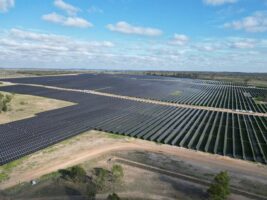Western Power is set to partner with global energy technology firm Schneider Electric to pilot a new energy management platform that will allow solar and storage installations to be coordinated and deliver ‘flexibility services’ to strengthen networks.
Through the pilot – one of the most significant in the state, and in the country – W.A. businesses will be able to opt-in to an arrangement to allow utility Western Power to control output and energy use from distributed energy resources, including solar, battery storage and controllable devices like heating and cooling HVAC systems.
The utility hopes to be able to use the control of these distributed resources to manage demand on the network, adjusting energy flows to prevent networks from being overloaded. In return, businesses would be entitled to receive financial compensation through their electricity retailer.
The pilot project is targeting as much as 100MW of flexible generation and demand capacity, that would provide energy system operators and network service providers a greater ability to manage peak demand periods and mitigate areas of congestion on Western Australia’s networks.
“Our remote energy management systems will provide increased levels of visibility allowing commercial and industrial program participants to balance their use from the grid and their own energy resources, such and PV and Storage,” Schneider Electric’s zone president for the Pacific region Gareth O’Reilly said.
“We’re excited about this innovative approach and supporting Western Power in a project that will facilitate greater adoption of distributed energy resources in WA.”
Schneider Electric will develop the distributed energy resource management platform to Western Power under the pilot, which will allow the utility to assess what flexible energy resources are available in an area, as well as managing transactions on behalf of participants.
Schneider Electric will use its platform to deliver flexibility services to networks, allowing distributed energy resources to play a role in managing voltage fluctuations, and ultimately supporting higher levels of renewable energy penetrations.
Schneider Electric’s pacific region smart grid systems director James Colbert told RenewEconomy that the Energy Profiler Online platform developed by the company, which will be used during the trial, would provide a demonstration of how distributed energy systems could be optimised for both the customer’s needs, as well as the wider needs of distribution networks when needed.
The energy management platform would allow devices like solar and storage to best serve the needs of commercial and industrial customers most of the time, but when there were constraints on the local distribution network, the devices could provide a level of flexibility to provide some relief.
Western Power hopes the platform will help to optimise energy use for a range of commercial and industrial energy users, while also using the added flexibility within the energy system to manage voltage and grid stability issues.
“By connecting renewable energy sources such as solar and wind and using smart technology, we’ve begun to progressively transform our network into a flexible grid that seamlessly connects batteries and microgrids,” Western Power CEO Ed Kalajzic added.
“Currently, rooftop solar PV across our network has the potential to contribute to 45 per cent of our system needs at certain times of the day – one of the highest percentages in the world. With households and businesses now not only consuming energy from the network but also supplying energy we’ve begun to transform the grid to ensure its more sustainable, adaptive and responsive for the future.
“This project aims to demonstrate how both our customers and the network can realise value by using customer owned distributed energy resources in balance with traditional network solutions. With support from Schneider Electric, our teams are working at the forefront of energy transformation and believe these advances will become a relevant benchmark for other distribution networks globally.”
With the increasing penetration of renewables across Australia, the need to manage energy demand and supply balances have emerged as a challenge across all levels of the energy system, including at the household, suburb and state-wide level.
A similar trial, also using Schneider Electric’s software platforms, will also be undertaken in the ACT and will also aim to optimise the use of distributed energy resources to benefit all aspects of the energy system.
South Australian energy minister Dan van Holst Pellekaan recently stressed the need for flexible energy management systems in that state, with the prospect that South Australia could start experiencing periods of zero net energy demand during times of high solar output.









